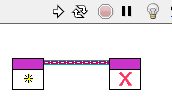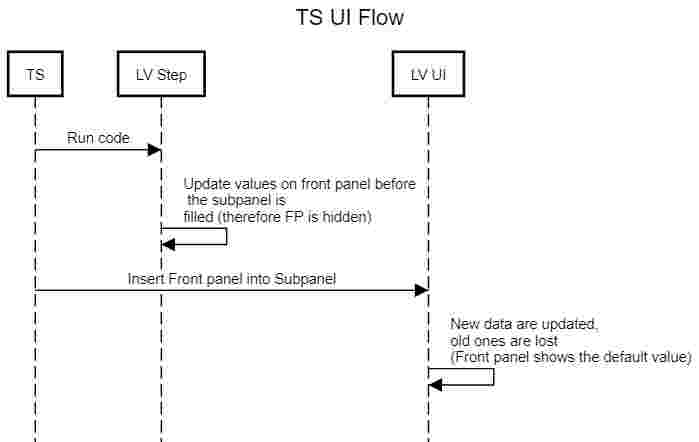-
Posts
47 -
Joined
-
Last visited
-
Days Won
1
Zyl last won the day on November 16 2010
Zyl had the most liked content!
Profile Information
-
Gender
Male
-
Location
Montreal, Canada
Contact Methods
- Personal Website
- Company Website
-
Twitter Name
Zyl7
- LinkedIn Profile
LabVIEW Information
-
Version
LabVIEW 2018
-
Since
2003
Zyl's Achievements
-
OK so there is no 'LAVA specific' Discord server, right ? The invitation on top is the LV Discord, which is already in my list of Discord servers.
-
-
Hi @drjdpowell! Thank you very much for your powerful lib ! We actually encounter a small problem with it. We do a lot of TestStand development, and therefore we create PPL for our code modules. The fact is JSONText lvlib contains lots of VIs where there is code in Disable Structures. When a Disable Structure contains a VI (like Treatment of NaN and Inf.vi) and you build a PPL, the PPL list the VI as a dependency but doesn't embed it (whatever the flags we use). The only way to make the PPL sucessful when it calls JSONText lvlib files is to completely remove the Condition Structures. Do you think it would be possible to release a version without 'dead code' into it? Cyril Gambini (aka CyGa, LV Champion, CLA, CTA).
-
Hi, Possible to get a new invite link ?
-

Public DVR on a private class : access problems
Zyl replied to Zyl's topic in Object-Oriented Programming
Hi Francois, I was seeing the DVR more like a 'pointer' (the address in memory) on the class, not a representation of the class itself. To me, if it is really a pointer, and the variable containing the pointer is public, I should be able to access the pointer everywhere. But of course, I wouldn't be able to use what's pointed (because it is private). This is the way I was seing this, I am maybe far away from the truth 🙂 Anyway, I wonder if it is the same behavior in C++ (or other OO language using pointers).... For the 'interface' part of the problem, yes the lvclass is a lib. But I guess that originally, the code was designed to allow building a PPL. So I guess that's why the interface is in a LVLIB and it contains the lvclass. -

Public DVR on a private class : access problems
Zyl replied to Zyl's topic in Object-Oriented Programming
Hi! The class itself is private (set a s private in the lvlib), so nobody with the DVR can use what's in the class outside the functions in the LVLIB. The control containing the reference is public. IMO, I should be able to create the control outside the lvlib. -
Hi everybody, I'm running into something I don't really understand. Maybe you can help me here ! I've got a LVLIB that is used as an 'Interface': it exposes public VIs which wrap around public functions of a private class (see code attached) . The class is private because I want to force the users to use the 'interface' functions. In one of my interface VI, I create a DVR on the private class (Interface_init). The DVR is stored into a typedef (FClass_DVR.ctl) and this typedef is the 'reference' that link all the interface public functions. In TestCode.vi (which is not part of the lvlib and illustrates the standard code that a user can create to use my driver), I can call my public interface functions and link them without any problem. But as soon as I create an indicator on that reference (to create a state-machine-context-cluster for example), my TestCode VI breaks ! The error returned is : This VI cannot use the LabVIEW class control because of library access scope. The LabVIEW class is a private library item and can only be accessed from inside the same library or libraries contained in that library. I understand that the class is private. But the DVR is contained into a public control. Using an In Place structure on that DVR into TestCode would not work, since the class is private. So why is the DVR control problematic at that point ? Creating it do not breaks any access protection... Am I missing something ? DVR Private POC.zip
-
Hi ! I'm developping a TestStand UI in LabVIEW. Within this UI, I want to display the front panel of VIs that are played in a TS sequence into a subpanel. It works fine ... except for values that were set into the 'sequence' VI (LV Step) before the front panel was loaded into the UI subpanel. If I want to 'redraw' them I have to read a property on the front panel controls into my LV step... I want my code to be as more generic as a possible, so I dont' want to add extra code into my LV step just to ensure that it will be displayed correctly into the subpanel. Do you have any idea how to force a front panel to redraw ENTIRELY (or at least all control/indicators visible) ? Note : I must be able to do it through VI server fron the 'outside' of the VI.
-
We do commit broken code ! And we think it is important : the trunk is the 'ongoing' state of the developement. So it is normal that the code is broken if prototype or wrong code is delivered. If we cannot build and make tests with the code, there is no chance that a stable release will be tagged. For the rest it only relies on team management and communication. But at least wit heth locking system and identified commit, we have a chance to know what is going on or at least who did it.
-
Thank you for your advices! I'll go with Mercurial and my Synology !
-
Hi! Thank you for all these answers. Hooovah: Thank you for the precision on separating compiled code / source. however for some of our customers, we still use old LV versions (2010..2013). So I guess the issues can still be a problem for these projects. Smithd : Locking on SVN helps a lot when working on big projects (I had once more than 10 developpers working on the same project) and it prevents headackes due to the merging process in LV. Since a locked file is read-only, and with LV well set, you don't get 'modified' VIs just because you opened them. Our rule is to unlock one by one the files to modify and to commit right after any modification is made, so that it unlocks the file rapidly. Locking issues with developpers is really rare. Neil : I plan to host the server on our Synology NAS, so everything stays 'in house'. For some of our customers it is (still) comforting to 'know' that the sources are not in the cloud. But I plan to use TortoiseHg as our client. Do you have any specific settings that you apply to your client ? To LV because you use Mercurial ? Antoine: I've seen that too on Twitter. And it let me think that Mercurial would be a better choice than Git (mainly for the non-mergeable files and Trunk-base dev rate). But so many people rely on Git (even NI lately) instead of Mercurial. So I was thinking that there is a particular reason about it.
-
Hi ! I know that there are numerous threads about SCC, but none really helped me to answer clearly this question : I want to move from SVN to a DSCC to be able to commit even if I cannot connect to my server, which DSCC should I use between Git and Mercurial AND how should I set it ? I use SVN for years now, and I always apply the same rules to be able to work with several developpers on the same projects : Files are all locked, a developper MUST unlock them to work on them Locked files are read-only LabVIEW is set to treat read-only files as locked and not to save automatic changes (old habit to avoid LV to recompile and ask to a VI for non-functionnal 'modifications') These settings work perfectly fine for us. Can I replicate such settings with Git / Mercurial ? Is there a point to do it ? I have a video from Fabiola explaining how she uses Mercurial with LV. One of her LV setting is to separate compile code from source code (I guess to avoid unnecessary changes made by the compiler when opening a VI for example to be taken into account by the DSCC). I've heard that this setting is sometimes buggy and generate more problems than really helping. Is it still true with new LV versions ? Reading some comparisons between Git and Mercurial, I would tend to use Mercurial (seems easier to use, more particularly by SVN users). But Git seems to be more popular even in the LV community. Is there any specific reason (related to LV or not) to that ? Thank you for your help and opinions ! Cyril
-
Hi! Maybe you can take a look to the advanced plotting API : http://advancedplotting.github.io/
-
This idea is mine and I posted back in 2014... Since then it is maked as 'In dev'.... In 2014 I was mainly developping my own RT apps, with my own framework (that is why I built a web console based on WebSocket). But now I mainly work with VeriStand. Even if my console is still usefull, it is even less easy to use it with VS. Looking at the number of Kudos on thsi idea I tought that NI would have put more eforts into it, it such a basic option...
- 17 replies
-
The 'console' is there on VxWorks and PharLaps system since ... a long time (I would say since the first release of LV RT, but I'm not 100% sure). You can see it indeed with video-hardware equipped targets but also on the configuration web page. So the video hardware is not necessary. Publishing string is done calling 'RT Debug String' VI. Works fine on VxWorks and PharLap cRIOs, and has absolutely no effect on Linux RT cRIOs (no error, no effect, seems to be no op when 'Write to monitor' is selected). When you are migrating code from 1 platform to another, you expect keeping the same behaviour (tracing access in this case).
- 17 replies






